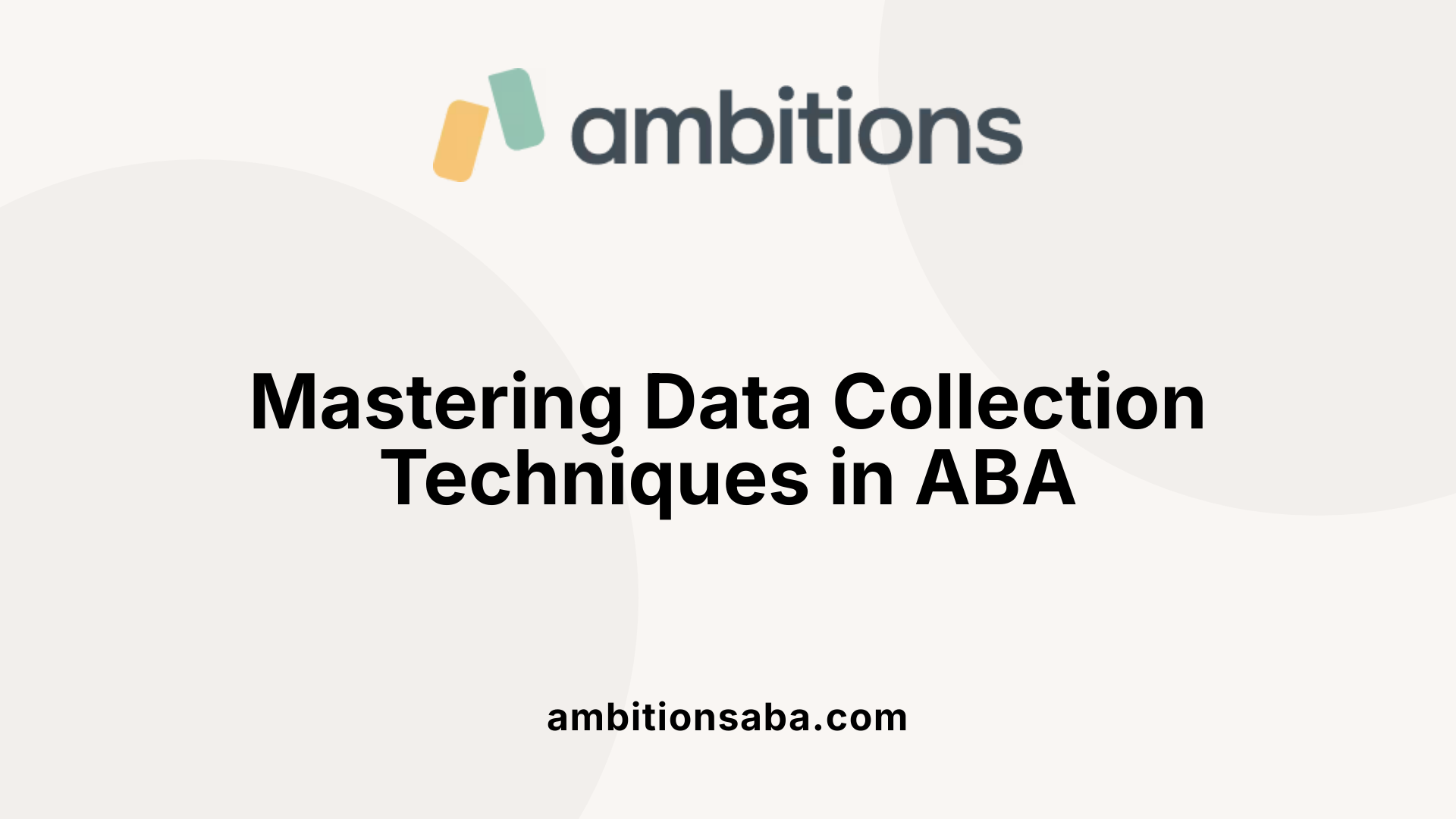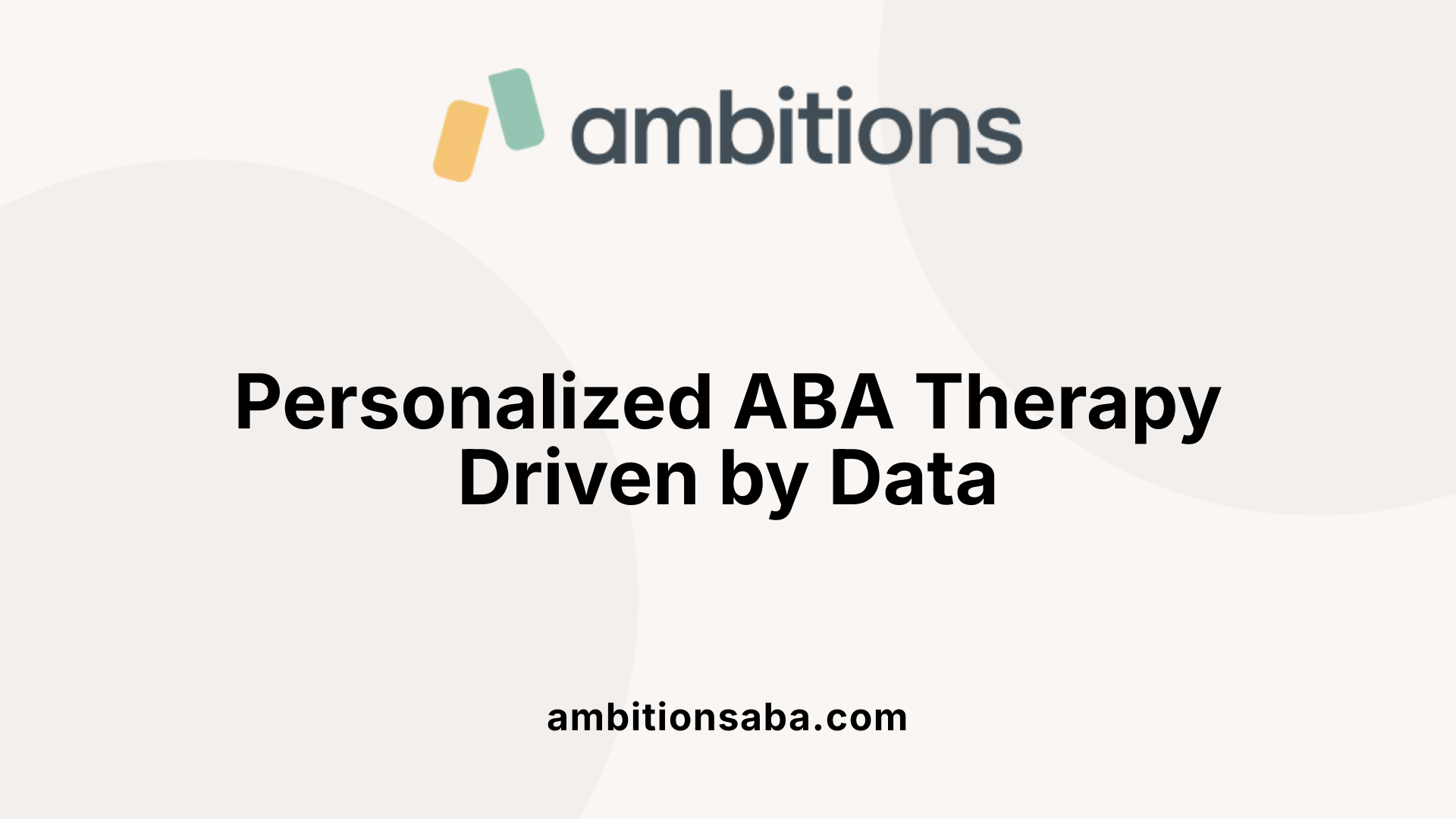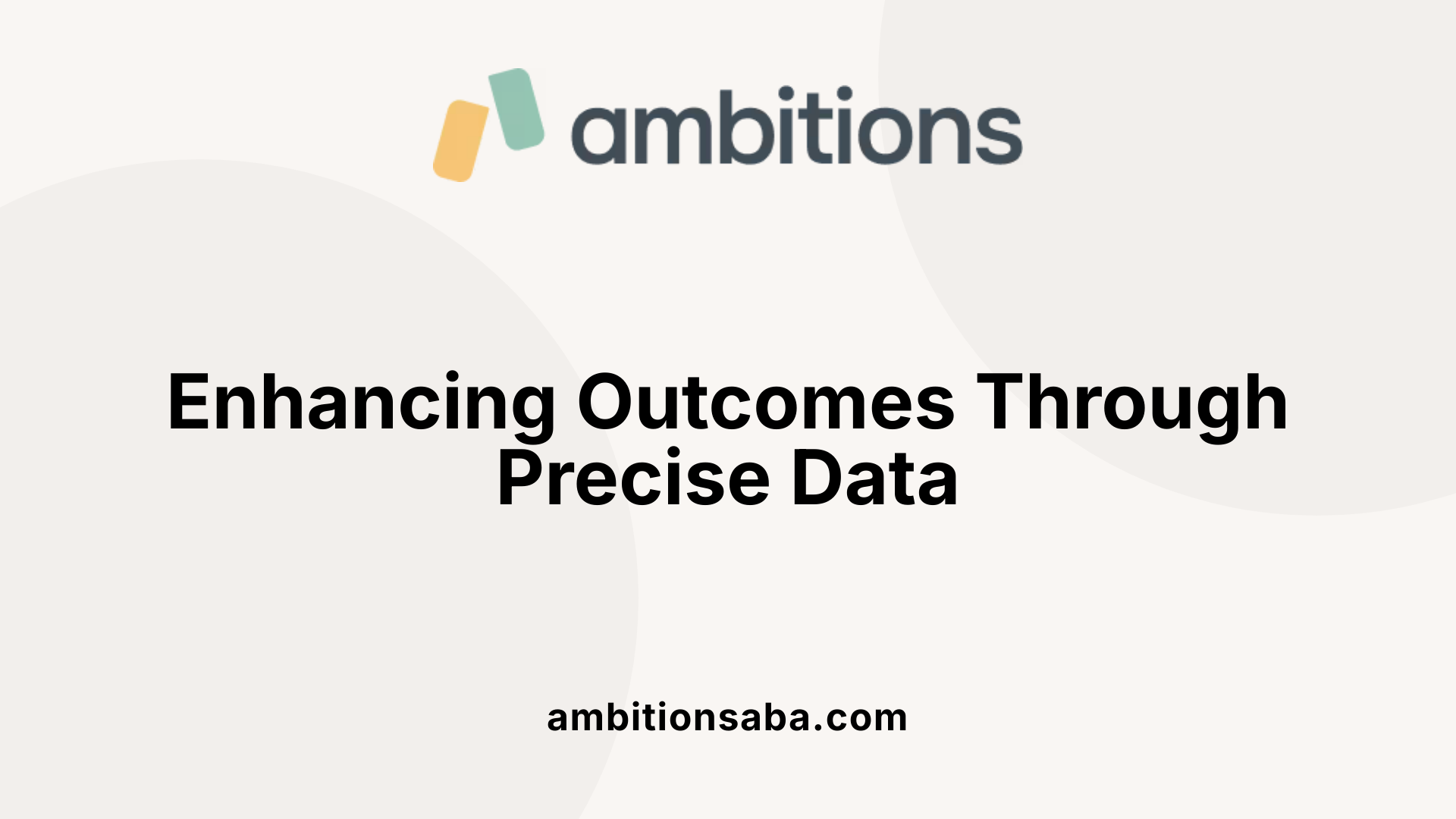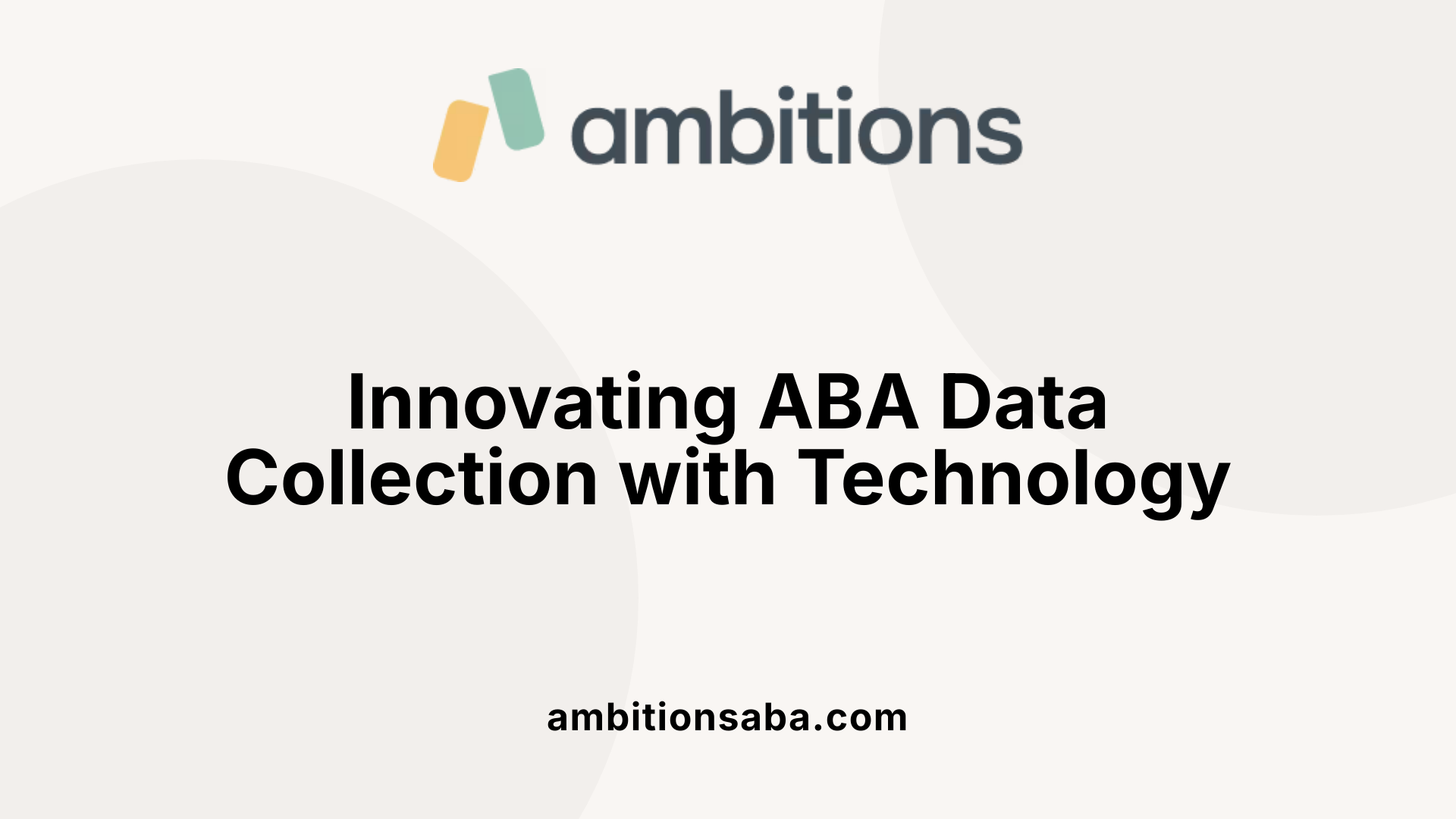Decoding the Neural Blueprint of Autism
Unveiling the Power of Data in ABA
In the field of Applied Behavior Analysis (ABA), data collection is the backbone that supports effective intervention and personalized treatment. It transforms subjective observations into objective, measurable evidence, enabling therapists to craft targeted strategies that promote meaningful change. This article explores the pivotal role of data collection in ABA decision-making, methods used, challenges faced, and the future of technology-enhanced practices.
The Central Role of Data in ABA Decision-Making

Why is data important in guiding ABA interventions?
Data collection is the foundation of effective ABA therapy. It provides concrete evidence of a child's behaviors, responses, and progress over time. By recording behaviors systematically—such as how often a behavior occurs, how long it lasts, or how quickly it happens—therapists can accurately assess whether interventions are successful.
Having objective data removes guesswork from therapy adjustments. When therapists analyze the collected information, they identify patterns, triggers, and the impact of specific strategies. This insight informs whether to continue, modify, or change treatments to better suit the child's needs.
How does data inform goal setting and progress monitoring?
Goals in ABA are measurable and tailored to each child. Data collection enables therapists to set initial benchmarks and track how behaviors change in response to interventions. Regular monitoring through ongoing data helps ensure progress towards these goals.
For example, if a child is working on social interactions, frequency or duration data can show if engagement improves over sessions. When progress stalls, data highlights the need for therapy adjustments, ensuring that interventions remain effective and aligned with individual developmental trajectories.
What is the role of data in ensuring therapy adapts to each child's needs?
Each child is unique, requiring personalized approaches. Data provides the specific evidence needed to customize interventions effectively. Through detailed analysis, therapists can identify what works best for a child—whether certain tasks need more practice, if reinforcement strategies are effective, or if new behaviors are emerging.
Consistent data collection allows for real-time modifications, helping the therapy adapt as the child develops. Parents and caregivers are also involved, providing additional data points that ensure consistency across different settings. This dynamic process maximizes the chances of successful therapy outcomes.
| Data Method | Usage Area | Benefits | Example |
|---|---|---|---|
| Frequency Recording | Counting how often a behavior occurs | Measures behavior frequency for goal tracking | Counting instances of tantrums |
| Duration Recording | Measuring how long behaviors last | Assesses intensity or persistence of behaviors | Duration of vocalizations |
| Interval Recording | Checking if behavior occurs within intervals | Captures behavior patterns over time | When a child smiles during sessions |
| Data Analysis | Identifying patterns and trends | Guides adjustments and decision-making | Recognizing triggers for aggression |
In summary, data collection in ABA is crucial for deciphering behavioral patterns, evaluating intervention success, and personalizing treatment plans. It supports a transparent, objective, and flexible approach that constantly evolves to meet each child's developmental needs.
Methods and Techniques for Data Collection in ABA

What methods and techniques are used for data collection in ABA?
Behavior analysts employ a variety of data collection techniques to accurately measure and understand children's behaviors in ABA therapy. These include both continuous and discontinuous methods.
Continuous methods involve recording every occurrence or amount of a behavior during a session. Common types are:
- Frequency (or count): Records how many times a behavior occurs.
- Rate (or rate per minute/hour): Calculates how often a behavior happens over a specific period.
- Duration: Measures how long a behavior lasts.
- Latency: Records the time between a signal and the behavior.
- Inter-response time: Measures the time between successive instances of a behavior.
Discontinuous methods estimate behaviors over intervals without recording every single occurrence, making data collection more manageable in complex settings. These include:
- Partial interval recording: Checks whether a behavior occurred at any time during a set interval.
- Whole interval recording: Marks if a behavior occurred throughout the entire interval.
- Momentary time sampling: Observes if a behavior occurs at the exact end of an interval.
Additional observational tools help understand behavioral functions and patterns. These include ABC data collection to identify antecedents and consequences, scatterplots for visual pattern spotting, and task analysis to break down complex skills.
In recent years, digital tools and software are widely used to improve data accuracy and efficiency. These tools enable real-time data entry, automatic calculations, and easier storage and sharing.
Advantages and limitations of continuous and discontinuous methods
| Method Type | Advantages | Limitations | Use Cases |
|---|---|---|---|
| Continuous (frequency, duration, latency, inter-response) | Precise, detailed, captures every occurrence | Time-consuming, can be impractical with multiple behaviors | When detailed analysis of specific behaviors is needed |
| Discontinuous (partial interval, whole interval, momentary sampling) | Faster, less burdensome, suitable for multiple behaviors | Less precise; may overestimate or underestimate behaviors | Monitoring general trends or behaviors that are difficult to record continuously |
Use of digital tools and software to enhance accuracy and efficiency
Integrating technology into ABA data collection greatly enhances the process. Software such as real-time data entry apps, cloud-based databases, and automated scoring tools reduce human errors and streamline data management.
These tools often include features like timers, customizable checklists, and immediate visualizations like graphs and charts. Such features facilitate swift decision-making and better collaboration among team members.
Looking ahead, innovations like AI-powered analysis and shared digital platforms promise even greater accuracy, easier monitoring, and enhanced data sharing capabilities. These advancements support the goal of making data collection more reliable, efficient, and accessible for all stakeholders involved in ABA therapy.
Guiding and Personalizing ABA Therapy Through Data

How does data collection guide and customize ABA therapy?
Data collection serves as the foundation for tailoring ABA therapy to each child's unique needs. By systematically recording specific behaviors—such as how often a behavior occurs, how long it lasts, or the conditions under which it happens—therapists gather measurable information that guides decision-making.
There are various methods available, including frequency counts, duration recordings, and ABC (Antecedent-Behavior-Consequence) data. These methods help to contextualize behaviors within environmental triggers and responses, providing a clear picture of what influences the child's behavior.
Analyzing this data enables clinicians to identify which strategies are most effective and to recognize patterns or triggers that may require intervention adjustments. This ongoing process allows for real-time modifications, ensuring that therapy remains aligned with the child's evolving needs.
Consistency in data collection promotes transparency and collaboration among therapists, parents, and caregivers. It ensures everyone involved has a shared understanding of progress and challenges.
Ultimately, data-driven approaches foster personalized interventions that are ethical, adaptive, and highly effective. By focusing on measurable outcomes, therapists can optimize treatment plans, boost engagement, and support meaningful, sustained progress in children receiving ABA therapy.
Impact of Data Collection on Clinical Outcomes

How does data in assessing intervention effectiveness shape therapy results?
Effective data collection forms the core of assessing how well an intervention is working in ABA therapy. By systematically recording specific behaviors and environmental factors, therapists can evaluate whether their strategies lead to meaningful improvements. Quantitative data, such as frequency or duration of behaviors, provides concrete evidence of progress, allowing for objective assessment.
When data shows positive trends, therapists gain confidence that the intervention is effective, and they can reinforce these strategies. Conversely, if data indicates little or no change, adjustments can be made promptly to enhance outcomes. This ongoing process transforms therapy from a one-size-fits-all approach into a personalized plan tailored to each child's evolving needs.
How does monitoring behavioral progress and patterns influence therapy?
Tracking behavioral patterns over time enables clinicians to understand triggers, maintaining factors, and underlying causes of behaviors. By analyzing trends in data, therapists can identify subtle changes or regressions that might not be obvious without detailed records.
This insight helps in refining interventions, addressing specific environmental cues, and setting realistic, measurable goals. Moreover, recognizing early signs of progress or challenges keeps the therapy adaptive and responsive, leading to better long-term outcomes.
How does real-time data facilitate immediate adjustments?
Real-time data collection allows therapists to observe ongoing behaviors during sessions, providing immediate feedback. This immediacy enables on-the-spot decision-making to modify strategies if a particular approach does not seem effective.
For example, if data indicates that a child is not engaging with a task, the therapist can promptly change the activity or environment. This dynamic adjustment prevents wasted sessions and accelerates learning. Moreover, real-time data supports proactive management of challenging behaviors, reducing their frequency and severity.
| Aspect | Benefit | Details |
|---|---|---|
| Data type | Quantitative & Qualitative | Includes frequency, duration, ABC data, and observational notes |
| Application | Personalized Adjustments | Enables tailored interventions based on current data |
| Impact | Improved Outcomes | Leads to more effective therapy sessions and better progress |
Overall, precise and timely data collection enhances the ability of therapists to make informed decisions, optimize interventions, and ultimately improve the therapeutic journey and results for children.
Challenges in Data Collection and Strategies for Improvement

Why is data collection so important in behavior analysis and treatment strategies?
Data collection is fundamental in ABA therapy because it provides a clear, objective picture of a child's behavior over time. It enables therapists to monitor progress, identify patterns, and make informed adjustments to interventions. Accurate data helps prove whether strategies are effective and guides personalized treatment plans. Without reliable data, therapists risk making decisions based on subjective judgment, which can compromise outcomes.
The importance of data integrity cannot be overstated. Data Collection Integrity (DCI) refers to how faithfully data are recorded as planned. Poor DCI can lead to inaccurate assessments and ineffective interventions. Challenges such as human error, multitasking, and resource limitations can threaten data quality. To address these issues, therapists often use strategies like ongoing feedback, supervision, setting specific goals, and providing incentives to improve data accuracy and consistency.
Ensuring high-quality data collection is essential for ethical and effective behavior analysis. It underpins many critical decisions and promotes transparency and collaboration among all involved in a child's therapy process.
Technological Advancements and the Future of Data Collection in ABA

How does data collection guide and customize ABA therapy?
Data collection is fundamental in shaping effective ABA therapy. It provides clear, measurable insights into a child's behaviors, skills, and response to interventions. Different methods—like frequency counts, duration logs, ABC (antecedent-behavior-consequence) charts, and interval recording—are chosen based on specific target behaviors and therapy goals.
By systematically recording data over time, therapists can monitor progress and identify which strategies work best. This allows for timely adjustments, making interventions more tailored to each child's needs. The insights gained from data help clinicians set realistic, achievable goals and refine treatment plans, ensuring that therapy is both effective and personalized.
Consistent data collection promotes transparent communication among all involved—therapists, parents, and caregivers. Sharing objective evidence of progress fosters collaboration and helps maintain a unified approach across different settings. Ultimately, this data-driven process drives better outcomes, supports ethical practices, and adapts interventions to sustain long-term growth and development.
Optimizing ABA through Data-Driven Strategies
In conclusion, data collection is not just a component of ABA — it is the foundation upon which effective, ethical, and personalized behavior interventions are built. Through rigorous methods, ongoing training, and technological innovation, practitioners can enhance the accuracy and reliability of data, leading to superior therapy outcomes. As advancements in AI and digital tools continue to evolve, the future of ABA promises even more precise, real-time insights, fostering improved collaboration among therapists, families, and other stakeholders. Embracing a data-driven approach is essential for delivering impactful treatment and supporting the continuous growth and development of individuals receiving ABA services.
References
- The Importance of Data Collection in ABA Therapy
- Types of ABA Data Collection Methods - Raven Health
- The Importance of Data Collection in ABA Therapy/Aim Higher ABA
- Toward an Understanding of Data Collection Integrity - PMC
- Data Collection in ABA: The Foundation of Effective Behavior Analysis
- The Role of Data-Based Decision-Making in ABA
- The Importance of ABA Therapist Data Collection | All Star
- Data Collection in ABA Therapy for Children with Autism
- ABA Data Collection Methods: What They Are and Why They Matter
- The Importance of Data Collection in ABA Therapy

